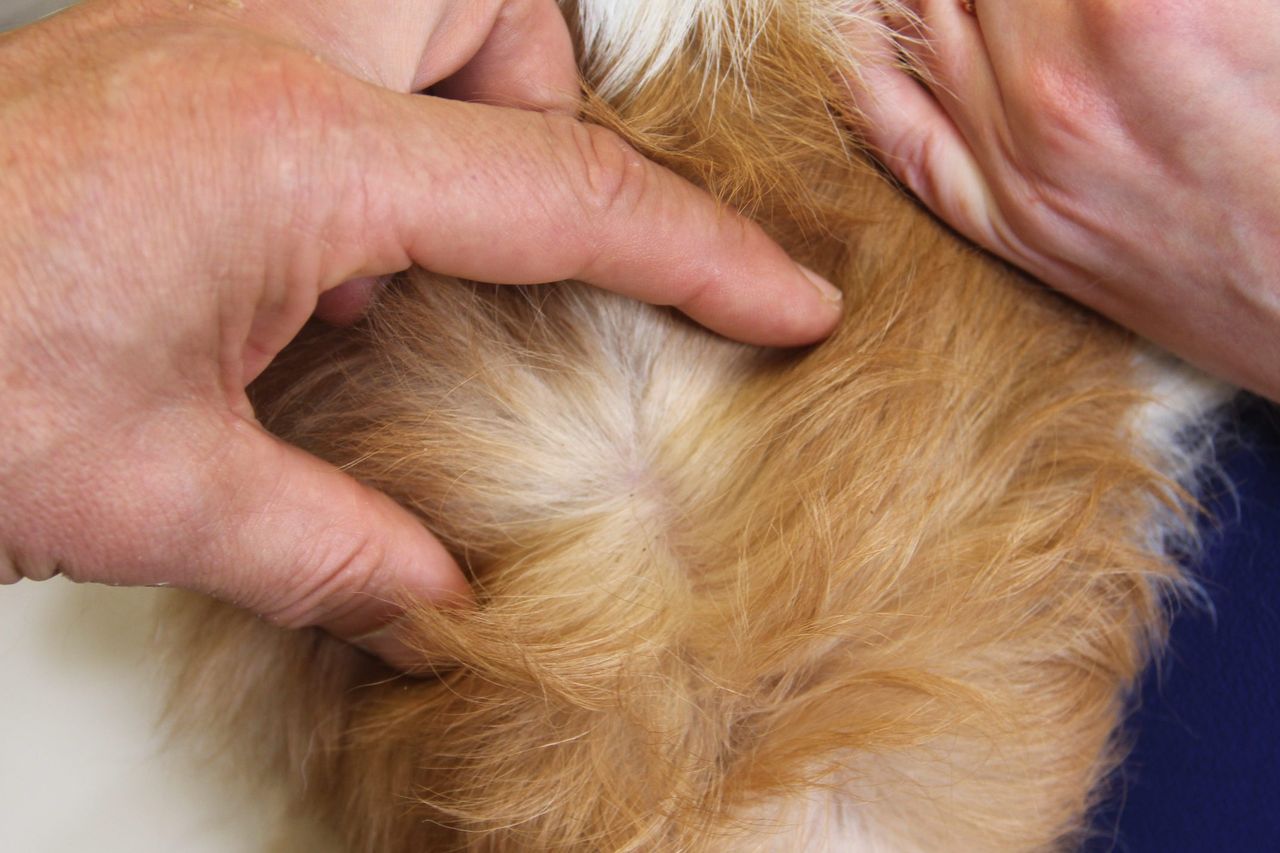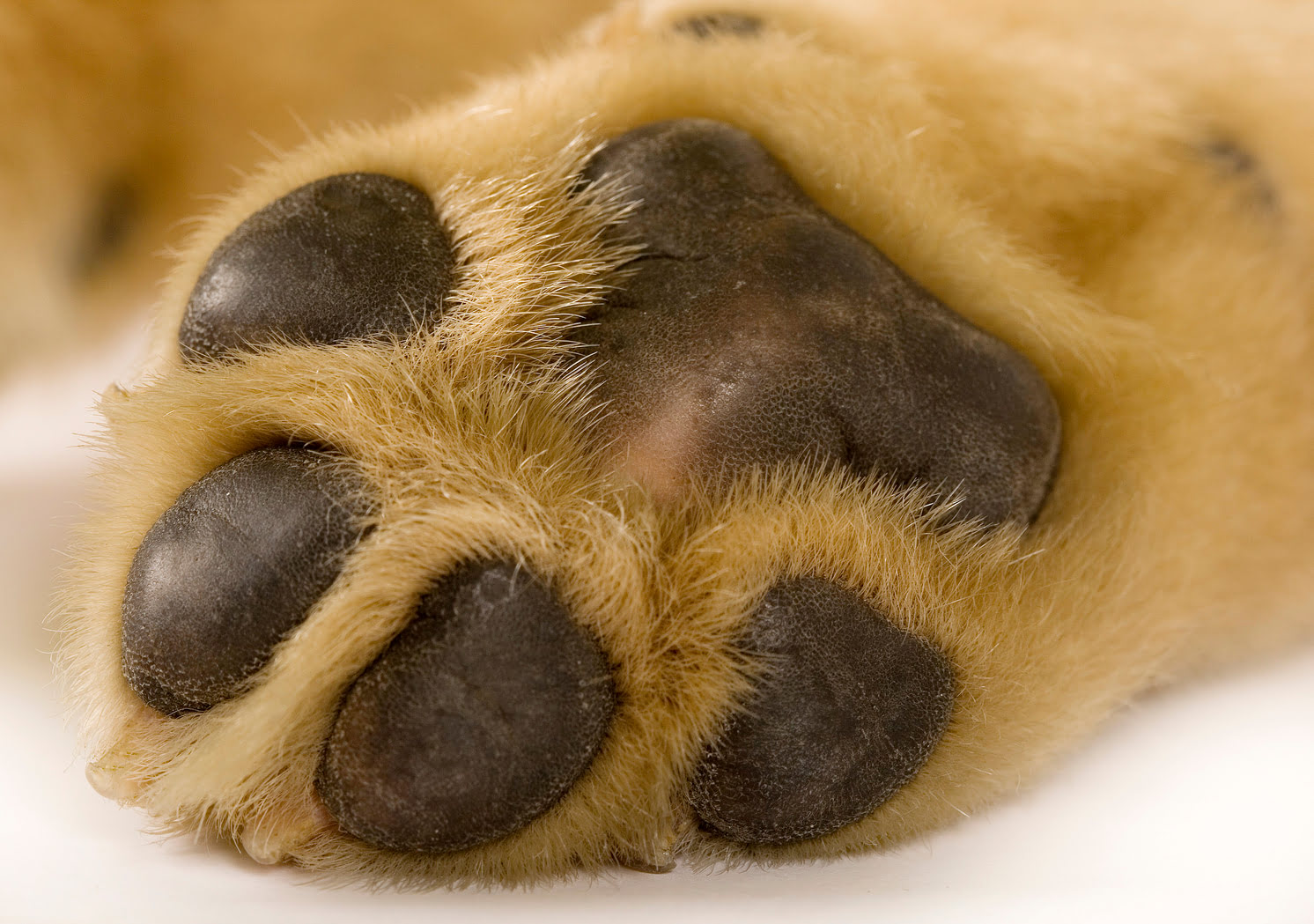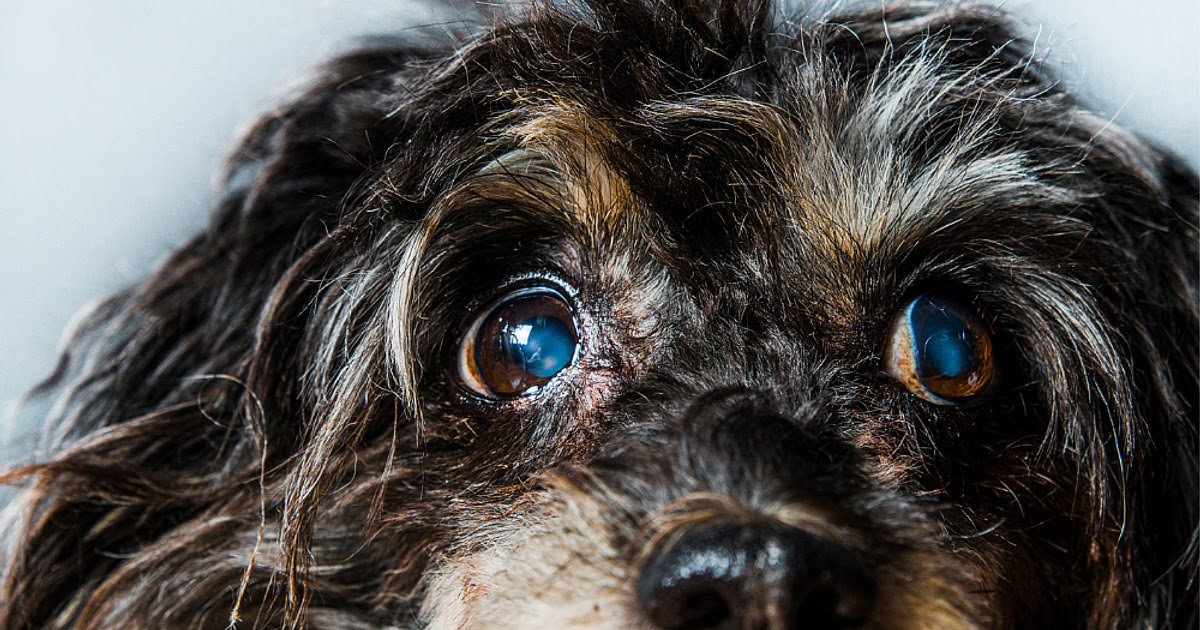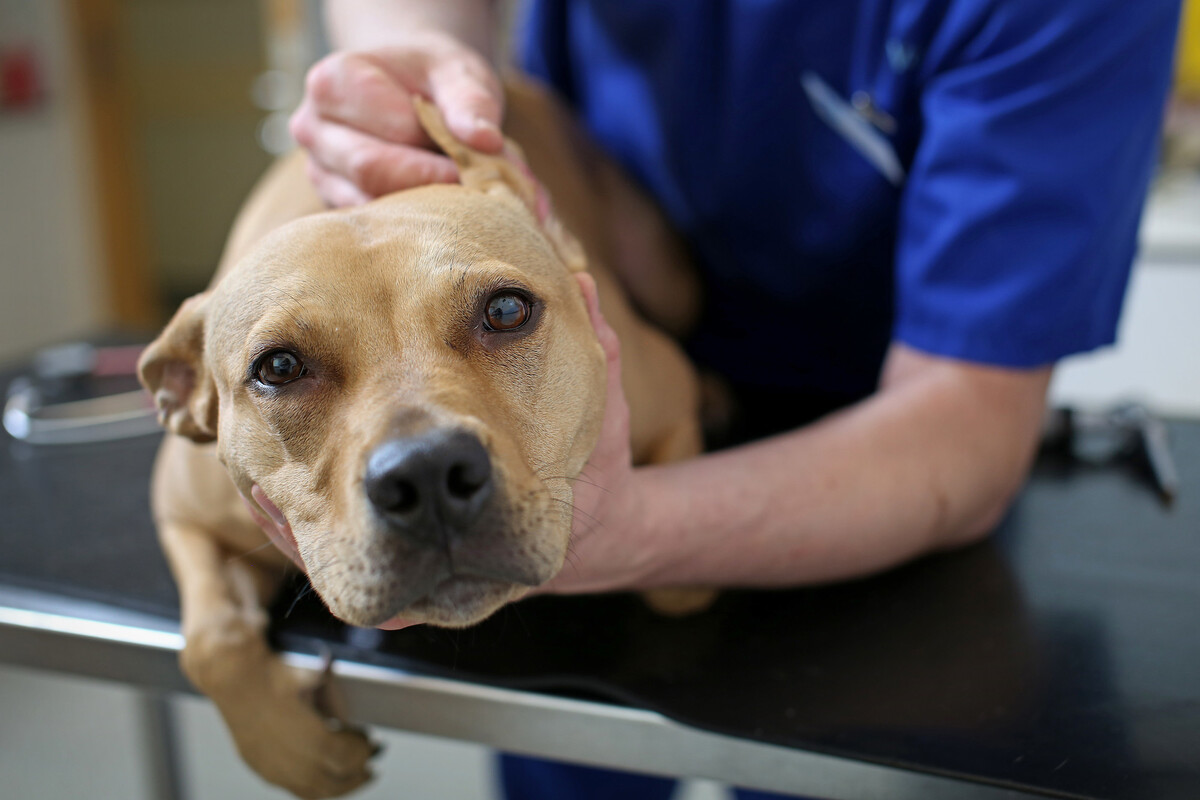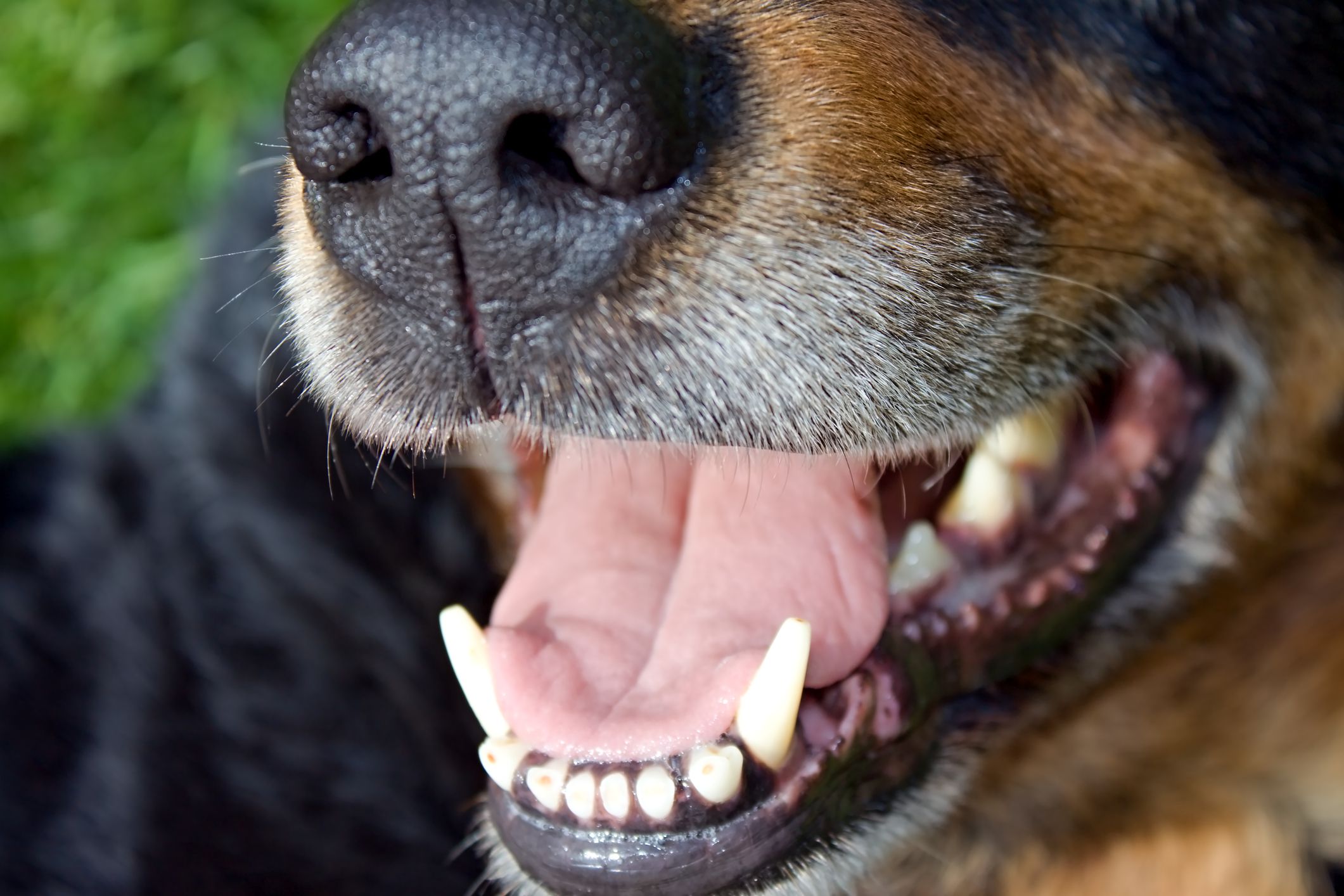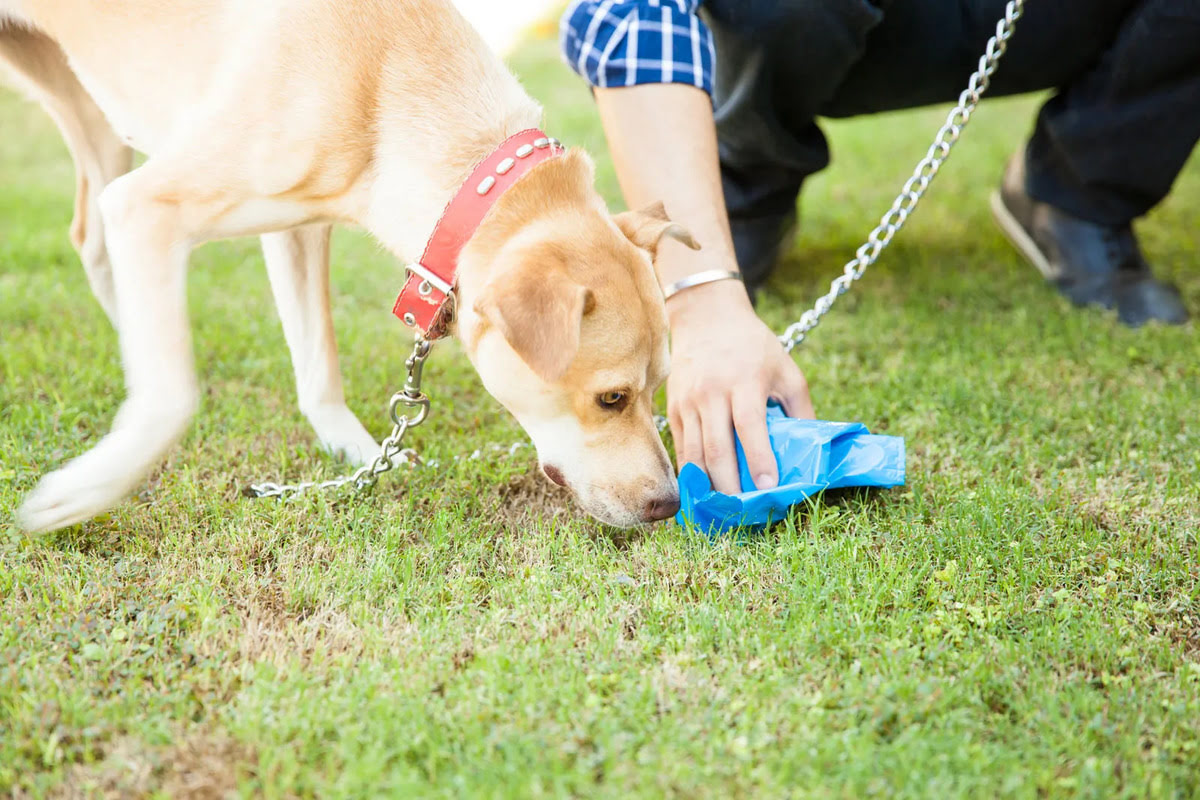Home>Health & Wellness>Common Health Issues>What Does A Tick Scab Look Like On A Dog?
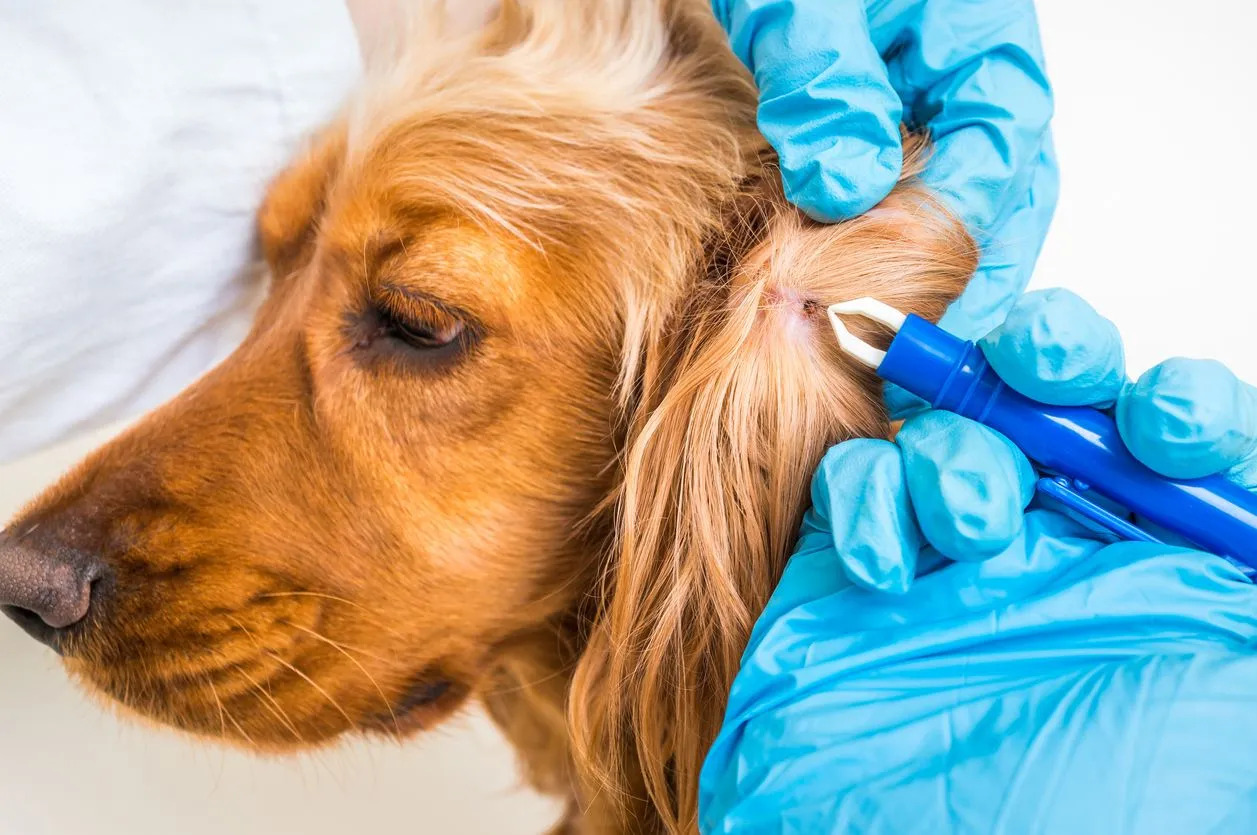

Common Health Issues
What Does A Tick Scab Look Like On A Dog?
Modified: February 21, 2024
Learn about common health issues in dogs, including what a tick scab looks like and how to identify and treat it. Keep your furry friend healthy and happy!
(Many of the links in this article redirect to a specific reviewed product. Your purchase of these products through affiliate links helps to generate commission for Pawsomeoldies.com, at no extra cost. Learn more)
Table of Contents
Introduction
Ticks are pesky parasites that can pose a threat to the health and well-being of our beloved canine companions. These tiny arachnids are notorious for latching onto dogs and feasting on their blood, potentially transmitting harmful diseases in the process. As responsible pet owners, it's crucial to be vigilant and proactive in protecting our furry friends from the dangers of tick infestations.
Understanding the risks associated with tick bites and knowing how to identify the aftermath, such as a tick scab, is essential for safeguarding the health of our canine companions. In this comprehensive guide, we will delve into the intricacies of tick bites on dogs, shed light on the telltale signs of a tick scab, and explore effective measures for treatment and prevention.
By gaining a deeper understanding of ticks and their impact on dogs, we can equip ourselves with the knowledge needed to provide the best possible care for our four-legged friends. Let's embark on this enlightening journey to unravel the mysteries of tick bites and empower ourselves with the tools to keep our canine companions safe and healthy.
Understanding Ticks and Tick Bites on Dogs
Ticks are small, blood-sucking parasites that belong to the arachnid family. These minuscule creatures thrive in outdoor environments, including grassy areas, wooded regions, and even our own backyards. When a dog ventures into these habitats, ticks seize the opportunity to latch onto their fur and skin, seeking a blood meal to sustain themselves.
Tick bites on dogs can lead to various health concerns, primarily due to the potential transmission of diseases. One of the most common diseases spread by ticks is Lyme disease, caused by the bacterium Borrelia burgdorferi. This illness can manifest in dogs with symptoms such as fever, lethargy, joint pain, and lameness. Additionally, ticks can transmit other harmful pathogens, including Anaplasma, Ehrlichia, and Rocky Mountain spotted fever, posing significant risks to a dog's well-being.
Identifying a tick bite on a dog can be challenging, as the initial bite is often painless and may go unnoticed. However, vigilant pet owners may observe certain signs that indicate a tick infestation, such as excessive scratching or licking in a specific area, skin irritation, or the presence of a small, dark spot on the dog's skin.
When a tick bites a dog, it embeds its mouthparts into the skin to feed on the host's blood. After engorging itself, the tick detaches from the dog and may leave behind a residual scab at the bite site. This tick scab is a visible indicator of a previous tick infestation and serves as a crucial clue for pet owners to take action and ensure their dog's well-being.
Understanding the behavior of ticks and the potential consequences of their bites empowers pet owners to take proactive measures in safeguarding their dogs. By recognizing the signs of a tick bite and being aware of the associated risks, pet owners can promptly address any concerns and seek appropriate treatment to mitigate the impact of tick infestations on their canine companions.
Identifying a Tick Scab on a Dog
When it comes to safeguarding our canine companions from the perils of tick infestations, being able to identify a tick scab is a crucial skill for pet owners. A tick scab, also known as a tick bite granuloma, is a residual mark left on a dog's skin after a tick has fed and detached. Recognizing this telltale sign is essential for addressing any potential health risks and ensuring the well-being of our furry friends.
A tick scab typically appears as a small, dark, crusty lesion on the dog's skin, often resembling a scab from a healing wound. It may be slightly raised and can vary in size, depending on the duration of time the tick was attached and the dog's individual reaction to the bite. The presence of a tick scab indicates that a tick has previously latched onto the dog's skin, engorged itself with blood, and subsequently detached, leaving behind this residual mark.
Pet owners should routinely inspect their dog's skin and coat, paying close attention to any unusual or suspicious marks. When examining for tick scabs, it's important to thoroughly check common areas where ticks tend to attach, such as the ears, neck, head, and between the toes. Additionally, running your fingers through the dog's fur and feeling for any raised or rough patches can help in identifying potential tick scabs.
In some cases, a tick scab may be accompanied by localized inflammation or redness in the surrounding area, indicating the dog's immune response to the tick bite. It's essential to differentiate a tick scab from other skin abnormalities, such as warts or moles, by closely observing its characteristics and considering the dog's recent outdoor activities.
Upon discovering a tick scab on your dog, it's advisable to consult a veterinarian for a comprehensive evaluation. The veterinarian can assess the tick scab, determine if any underlying issues need to be addressed, and recommend appropriate treatment or preventive measures. Additionally, the veterinarian may conduct a thorough examination for any remaining ticks or signs of tick-borne illnesses to ensure the dog's health and well-being.
By being vigilant in identifying tick scabs and promptly seeking professional guidance, pet owners can take proactive steps to address any potential concerns and protect their dogs from the adverse effects of tick infestations. This proactive approach not only promotes the health of our canine companions but also strengthens the bond between pet owners and their beloved pets.
Treatment and Prevention of Tick Bites on Dogs
Effective treatment and prevention strategies are essential in safeguarding dogs from the harmful effects of tick bites. By implementing proactive measures and timely interventions, pet owners can mitigate the risks associated with tick infestations and ensure the well-being of their beloved canine companions.
Treatment of Tick Bites on Dogs
Upon discovering a tick bite or tick scab on a dog, prompt action is crucial to address any potential health concerns. Here are essential steps for treating tick bites on dogs:
-
Tick Removal: Carefully remove any remaining ticks from the dog's skin using fine-tipped tweezers. Grasp the tick as close to the skin's surface as possible and pull upward with steady, even pressure. Avoid twisting or jerking the tick, as this may cause the mouthparts to break off and remain embedded in the skin.
-
Wound Care: After tick removal, cleanse the bite site with mild soap and water to prevent infection. Gently pat the area dry and apply an antiseptic ointment to promote healing and reduce the risk of secondary infections.
-
Monitoring for Symptoms: Monitor the dog for any signs of illness or unusual symptoms following a tick bite. If the dog exhibits lethargy, fever, loss of appetite, or lameness, seek veterinary attention promptly to rule out any tick-borne diseases.
-
Consultation with a Veterinarian: It's advisable to consult a veterinarian for a comprehensive evaluation of the tick bite and the dog's overall health. The veterinarian can assess the potential risks associated with the tick bite, recommend appropriate treatment, and provide guidance on preventive measures.
Read more: What Does A Tick Look Like In Dog Skin
Prevention of Tick Bites on Dogs
Preventive measures play a pivotal role in reducing the likelihood of tick infestations and safeguarding dogs from the associated health risks. Here are effective strategies for preventing tick bites on dogs:
-
Regular Tick Checks: Routinely inspect the dog's skin and coat for the presence of ticks, especially after outdoor activities. Pay close attention to common attachment sites, such as the ears, neck, and between the toes. Promptly remove any ticks to prevent them from feeding and transmitting diseases.
-
Tick Control Products: Utilize veterinarian-recommended tick control products, such as spot-on treatments, tick collars, or oral medications. These products can help repel and eliminate ticks, reducing the risk of infestations and tick-borne illnesses.
-
Environmental Management: Maintain a well-groomed and tick-resistant outdoor environment by keeping grassy areas trimmed and minimizing dense vegetation where ticks thrive. Consider using pet-safe tick repellents in outdoor spaces frequented by the dog.
-
Vaccination: In regions where tick-borne diseases are prevalent, discuss the option of tick-borne disease vaccinations with the veterinarian. Vaccines can provide an additional layer of protection against specific tick-borne illnesses.
-
Regular Veterinary Examinations: Schedule routine veterinary check-ups to assess the dog's overall health and discuss preventive measures against ticks and tick-borne diseases. The veterinarian can recommend tailored strategies based on the dog's lifestyle and environmental exposure.
By diligently implementing these treatment and prevention strategies, pet owners can effectively manage tick bites on dogs and minimize the potential health risks associated with tick infestations. Proactive measures, coupled with regular veterinary care, contribute to the well-being and longevity of our cherished canine companions.
Conclusion
In conclusion, the presence of a tick scab on a dog serves as a visible reminder of the potential risks associated with tick infestations and the importance of proactive tick bite management. By understanding the behavior of ticks, identifying tick scabs, and implementing effective treatment and prevention strategies, pet owners can safeguard their canine companions from the adverse effects of tick bites.
The discovery of a tick scab prompts pet owners to take swift action, including thorough tick removal, wound care, and vigilant monitoring for any signs of tick-borne illnesses. Seeking professional guidance from a veterinarian is paramount in addressing tick bites and ensuring the dog's well-being. Additionally, preventive measures, such as regular tick checks, tick control products, environmental management, and vaccination, play a pivotal role in reducing the risk of tick infestations and protecting dogs from tick-borne diseases.
By fostering a proactive approach to tick bite management and prioritizing preventive care, pet owners can provide a safe and nurturing environment for their beloved canine companions. The bond between humans and dogs is strengthened through the commitment to their health and well-being, and by equipping ourselves with the knowledge and tools to address tick bites, we can ensure that our furry friends lead happy, healthy lives free from the perils of tick infestations.
In essence, the journey of understanding and managing tick bites on dogs empowers pet owners to be vigilant, compassionate, and proactive in safeguarding the health of their cherished canine companions. Through education, awareness, and a deep sense of responsibility, we can create a harmonious and thriving environment for our dogs, where they can frolic and play without the looming threat of tick-borne illnesses. Let us continue to prioritize the well-being of our furry friends and embark on this journey of care and protection, ensuring that they live their lives to the fullest, free from the burdens of tick infestations and their potential consequences.
